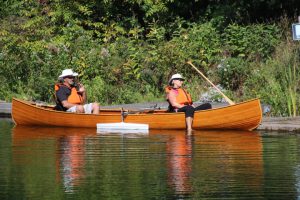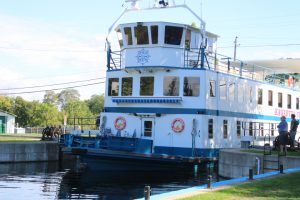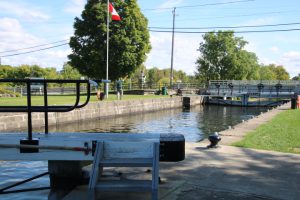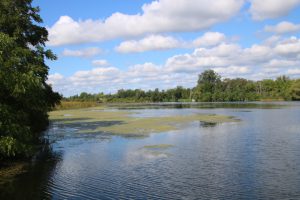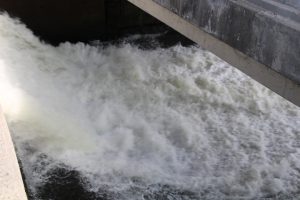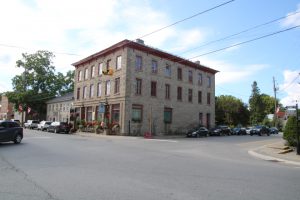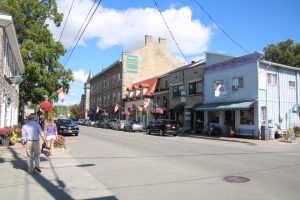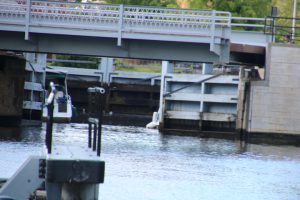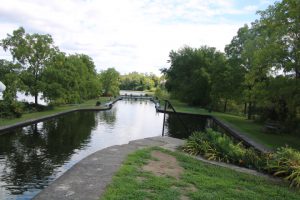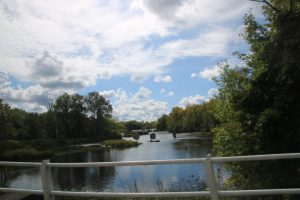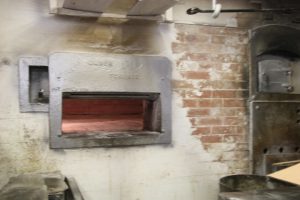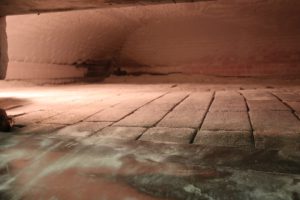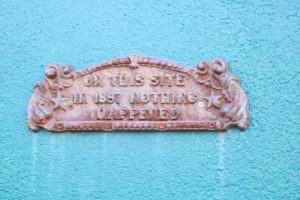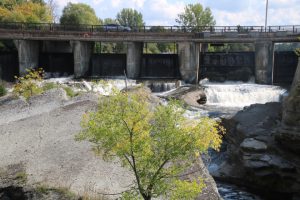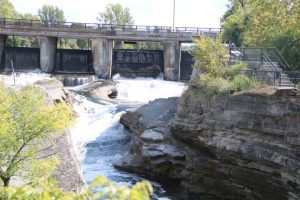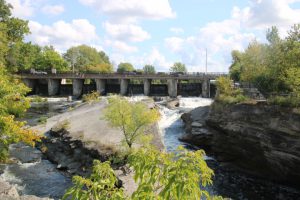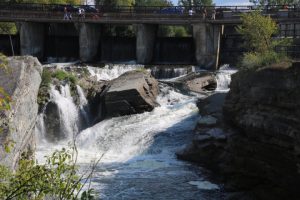We had an exploration of Southern Ontario today. We concentrated upon the Rideau River and its canal system which links Ottawa and the Ottawa River with the St. Lawrence at Kingston. Today this is used by pleasure craft but was originally built to ensure that Canadian products could be exported during times of civil unrest, such as with the French and the Americans. We started at the small town of Merrickville which has been an important location on the canal since 1793. The river falls down several small waterfalls here so a small staircase of locks had to be built here. One of these waterfalls around 1911 was used to produce hydro-electricity and the remains of one of the turbines is to be found on an island below the falls. Today there are boutiques, galleries and restaurants which all year round attract many visitors.
Next stop was Kemptville situated on the south branch of the Rideau. This small town is familiar to one of our party as the home of relations. Some of it is recognisable and in particular Grahame’s Bakery which has operated since 1885. It was lunchtime when we arrived here but we were lucky to see the oven, still wood-fired and brick lined which is thought to be the only one of its kind still in operation in Canada. Speaking to the baker he said ‘his bread was bought daily by the Geronimo Cafe’. Along the road we went (a little flashback to the wild west with timber and false fronted buildings) to have lunch and sample the bread. Delicious!!
Later in the afternoon we visited a series of waterfalls on the outskirts of Ottawa called the Hog’s Back. Even though the water was low it was still impossible to navigate.
Our last call was the village of Manotick, 15km south of Ottawa which is largely built on Long Island between the Rideau River and its canal. Near the Mill Tavern, where we ate dinner, is Watson’s Mill. This stone built flour mill has operated here for several hundred years. Nearby is the War Memorial and gardens with the names of those who lost their lives in two wars, inscribed in the stone pavement.
